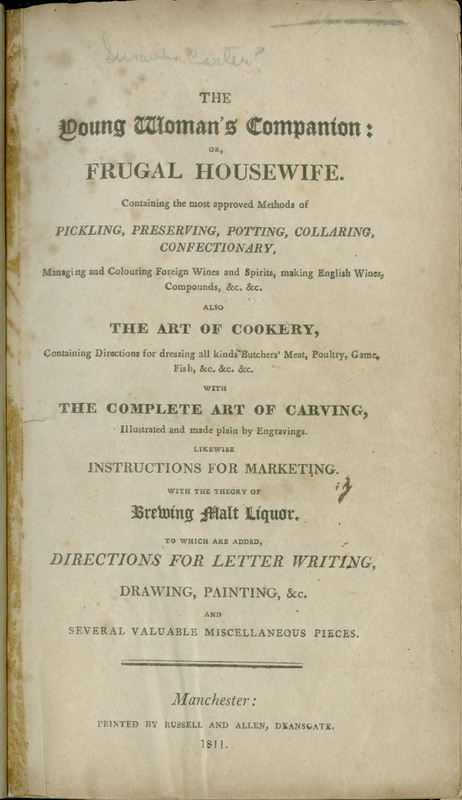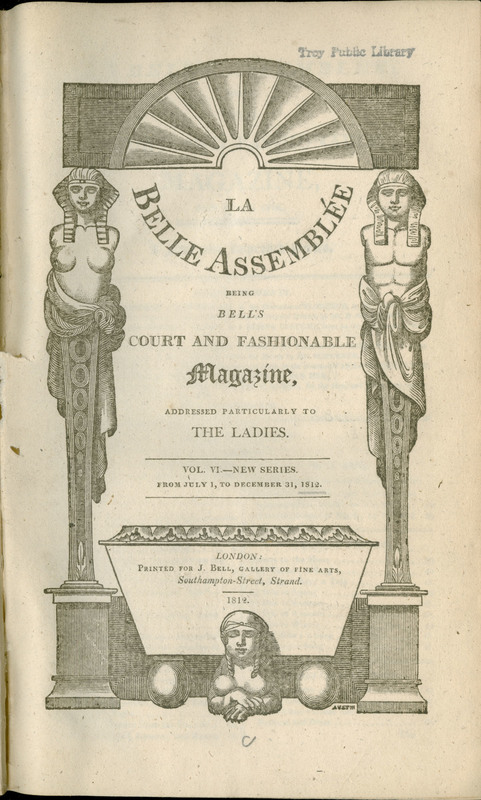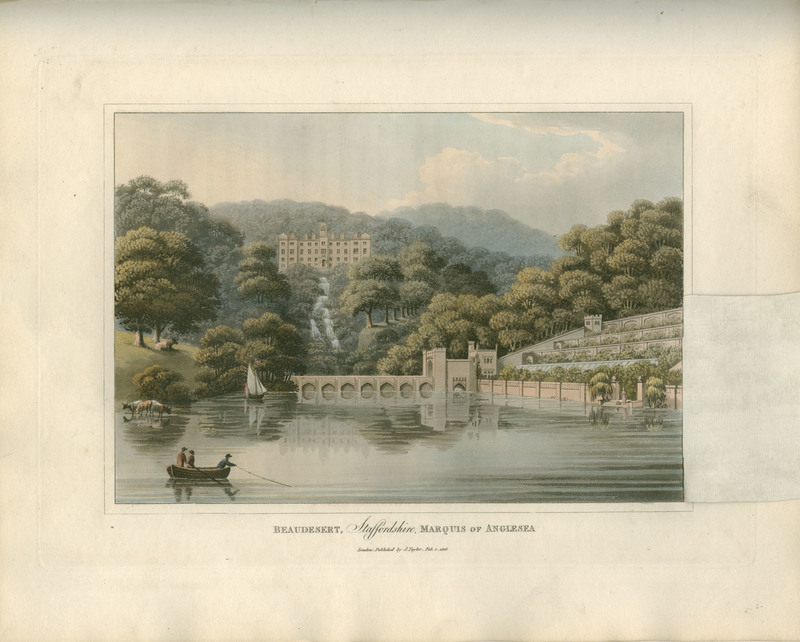Fashion and Design
Though Savile Road was the one-stop shop for bespoke menswear tailoring, women were more involved in the process of making their fashion choices. They looked beyond London storefronts and into the pages of lifestyle magazines full of the latest poetry, social etiquette tips, art work, and of course, fashion. This is the first edition of La Belle Assemblée, a popular magazine amongst Regency era periodicals. The magazine, also known as Bell’s Court and Fashionable Magazine, was founded by John Bell and ran between 1806 and 1837.
La Belle Assemblée is known for being one of the first fashion and lifestyle magazines that catered specifically to women. The earliest issues, such as this one, included more than just fashion and touched on culturally significant items at the time such as poems and popular sheet music, though these were later phased out in the 1820s to favor more extensive coverage of fashion and profiles of prominent women of the time. La Belle Assemblée is remembered today for its fashion plates, of which there were two versions: the magazine was printed in black ink plates, though for an additional fee it could be purchased in a colored version as well.
(Caroline Filips, Emma Kinery)
Published in July of 1812, this volume of La Belle Assemblee circulated while Austen was editing Pride and Prejudice, which was published in early 1813. La Belle Assemblée comprises the latest fashions, biographies of “illustrious and distinguished ladies,” ornamental designs, descriptions and drawings of public assembly places, theater and novel critiques, and advertisements. The publication therefore functions as a guide for women from middle to high class social standings. It provides instructions on how to dress, where to go, and what popular opinions to have. Its content ultimately reflects a rise in consumer culture in early nineteenth century England, specifically targeting women through advertisement. Austen herself was enthusiastically interested in fashion. In a letter to her sister Cassandra, dated December 1798, she writes: “I have changed my mind, & changed the trimmings of my cap this morning… & I think it makes me look more like Lady Conygham now than it did before, which is all that one lives for now.” Here, Austen demonstrates a cultural trend leading women to imitate those of royal status in an effort to improve their own social standings. It is likely that Austen would have referenced La Belle Assemblée in her personal life: we know her niece Fanny Knight owned an 1814 issue. Austen may also have used this magazine, or a similar one, to imagine outfits for her characters and play on the social indications of their choice of fashion.
(Margaret Kolcon, Charlotte Merkle, Lara Moehlman)
After training and failing in the textile industry, Humphry Repton (1752-1818) began his illustrious career as a landscape designer and architect. Repton's appearance was famously exhibitionist and landscape gardening offered him a chance to mix with the higher classes of society while making a living. Repton’s style relied on minimal changes, such as planting shrubbery or removing a wall, to achieve drastic aesthetic changes. He began to write about his projects in order to establish himself in his field. This coffee table book, published in 1802, is 16x10 inches with a cover of green stamped leather. It has large text and vibrant prints of before/after drawings of landscapes that Repton designed and executed. Alongside these drawings are descriptions of the project and any struggles that had to be worked through in order to complete the project.
Austen mentioned Repton five times in one chapter of Mansfield Park when Mr. Rushworth discusses remodeling Sotherton Court, making him the most mentioned factual person in any of Austen's novels. "Repton" had become a metonym, where his name was used as a generic substitute for every landscape designer and Austen's use of Repton's name was a satirical nod to popular culture. Repton’s book is also exemplary of the Gothic resurgence in architecture that inspired authors to write gothic novels that Jane Austen then parodied with Northanger Abbey. Observations is a testament to Repton’s influence throughout society during Austen’s time.
(Abraham Lofy, Olivia Velarde)
Humphrey Repton
Fragments on the Theory and Practice of Landscape Gardening: Including Some Remarks on Grecian and Gothic Architecture...
London : Printed by T. Bensley and Son, Bolt Court, Fleet Street; for J. Taylor, at the Architectural Library, High Holborn, 1816
In late eighteenth and early nineteenth-century England, much attention was paid to an estate’s surrounding flora and fauna. This book by Humphry Repton, a renowned landscape architect of Jane Austen’s day, sets forth the renovations of wealthy estates in England, and the theory behind their designs. Repton, who coined the term landscape gardening, had a rapid rise to fame at the turn of the 19th century, in part because of the success of his books. These books, along with numerous commentaries over the importance of taste in regards to architecture and landscape design, display many watercolor illustrations of estates before and after his renovations.
In chapter six of Mansfield Park, in which Mr. Rushworth worries about who could renovate the Sotherton estate, Mrs. Bertram states that “Your best friend upon such occasion would be Mr. Repton, I imagine” (42). Many of Repton’s renovations involve an increase in the size of the house, an addition of ample gardens and bodies of water, and the removal of large trees. Most importantly, in regards to Jane Austen’s novels, Repton’s work paid attention to the dynamic relationship between an estate’s landscape and the humans that inhabit that landscape. Many of the spaces he created were conducive to social interaction, such as libraries, dining areas, gardens, and terraces, which Jane Austen often employed in setting the scenes of her novels.
(Shane Achenbach, Claire Tobin)

Education and Conduct

Food and Drink







